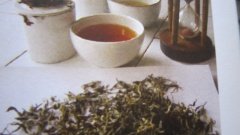
In the early 1800’s tea grew in demand across the globe with lots of competition between shipowners. Finding the fastest way of transporting the tea along the Far East shipping routes lead to the development of the ‘Tea Clipper Races’.
The Great Tea Race of 1866 was an unofficial competition between the fastest clipper ships of the China tea trade to bring the season’s first crop of tea to London in 1866[1].
Fierce competition existed year round to be the vessel first back to London with the new shipment of tea; extra incentives were added in 1866, when heavy bets were made in England on the winner.
The tea clipper races had by this time become a tradition in the tea trade between Britain and China. The winning vessel was awarded an extra pound sterling for every ton of freight delivered, and the captain of the winning tea clipper was given a percentage of the ship’s earnings. http://en.wikipedia.org/wiki/The_Great_Tea_Race_of_1866
By 1870 Ceylon (today, Sri Lanka) was one of the biggest names in tea although a bit of a late starter. Up until 1870 the country had only grown coffee but due to a fungus which caused a severe coffee blight their coffee industry was threatened overnight.
The coffee planters then decided to turn to the wild Ceylonese tea plant in an effort to reap some rewards. The success was immediate and still today Ceylonese tea is regarded as some of the best teas in the world.
The rapid expansion of the Ceylon’s tea industry brought a lot of interest from some large British companies and the first vessel recorded as carrying Ceylon tea to England was the steam-ship ‘Duke Argyll’ in 1877.
According to the Ceylon Tea Museum http://www.ceylonteamuseum.com/history.html Four estates were purchased by a grocer whose name is almost a synonym for tea: Thomas Lipton. Son of poor Irish immigrants, Lipton grew up amidst the slums of Glasgow. He left school at the age of 10 to help support his family and in 1865 sailed to America to work as a manual laborer and later managed a successful New York grocery store. It was here that he learned all the tricks and techniques of advertising and salesmanship that he later used to great effect when selling groceries and tea back in England and Scotland. He returned to Glasgow in 1871 and worked for a couple of years in the grocery shop run by his parents. By the age of 21, he had opened his own store, where he practised the retailing skills he had learned in America. His imaginative marketing and clever publicity stunts brought his new venture rapid success.
The rest, as they say is history.



No Comments
Very interesting, thanks.
Glad you liked it 🙂 x
You would really have the idea that tea is an old industry, but it is really coffee that has a longer history. Well thats how I believed it to be anyway.
That is quite right though Hut, it was coffee first.
Sorry about the mcaffee problem, I have their own security on mine and have about two people on blog.co.uk who cannot access my posts at all but can do nothing about helping them to get through as it is their own server that doesn’t like me. I hope we don’t lose each other and it keeps letting you read my posts. 🙂
Mine has run out.
My McFee anti-virus is really suspicious of your site at times for some reason.
peter
Fascinating stuff. I really love my cuppa 😀
Thanks bda, glad you found it interesting. There is a lot out there about tea :)x